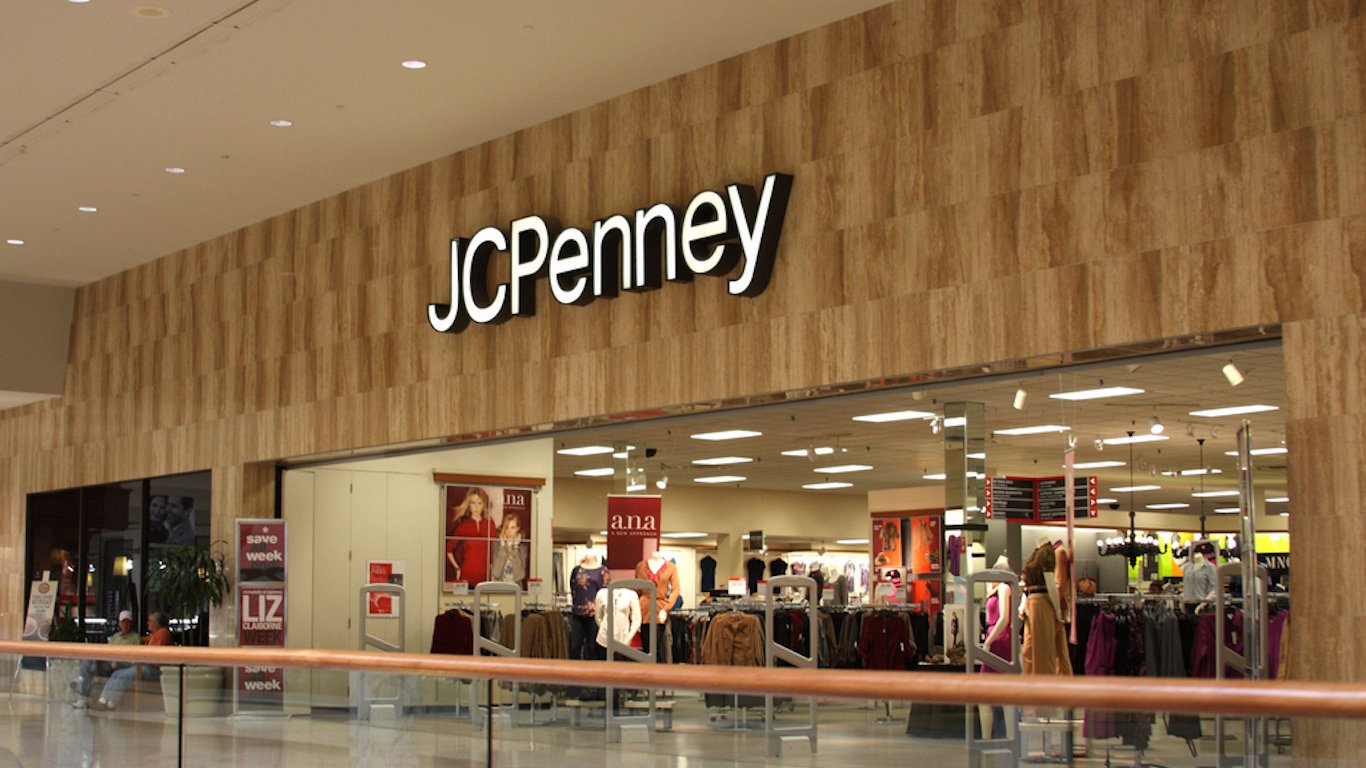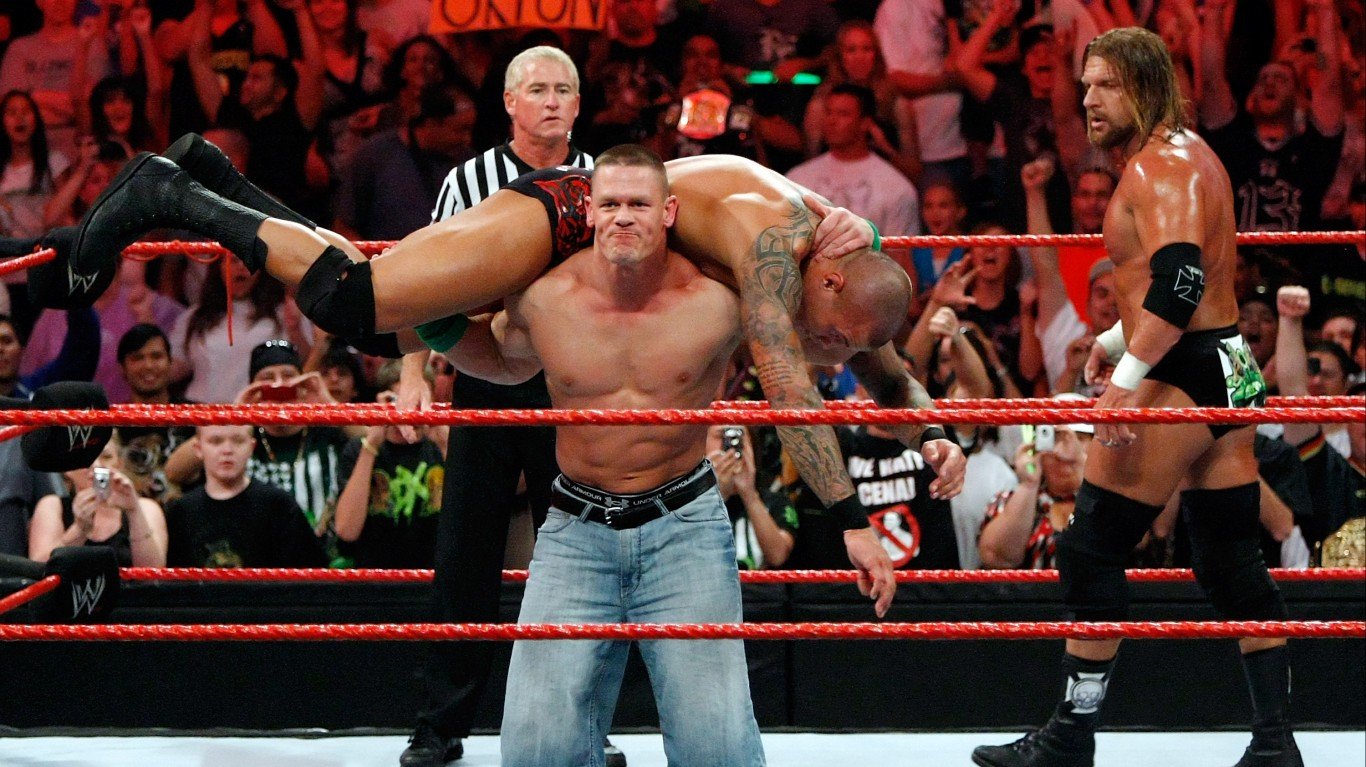

While the S&P 500 posted a share price gain of around 29% last year, shares of department store retailer J.C. Penney & Co. Inc. (NYSE: JCP) rose by 1.75%. By any measure, though, 2019 was a big improvement for J.C. Penney, which dropped about 70% in 2018, and for the S&P 500, which fell by around 7% in the same year.
Over the past five years, the S&P 500 has risen by about 27%, and J.C. Penney stock has lost about 86%. Last year’s increase of less than 2% is hardly a reason to break out the champagne. What’s worth examining, however, is whether the venerable retailer has turned a corner or whether 2019’s share price gain was just an unsustainable blip.
When Things Began Going Wrong at J.C. Penney
The Great Recession hit the company hard. In a world where traditional retailers were transitioning from brick-and-mortar stores to electronic commerce and online stores, J.C. Penney’s owned and operated too many stores, especially in dying shopping malls, with a business model that was already facing overwhelming competition from Walmart Stores Inc. (NYSE: WMT).
J.C. Penney company sales in 2007 totaled $19.86 billion. In 2008, total sales fell to $18.49 billion. The following year sales dropped 5% to $17.56 billion.
Earnings per share have gotten progressively worse. From a loss per share of $0.06 in 2017 (fiscal year ended in January), the loss increased to $0.38 per share in 2018 and $0.81 per share in 2019. Adjusted for one-time items, losses were $0.08, $0.03 and $0.48 in 2017, 2018 and 2019, respectively.
The company’s sales mix in 2008 was heavily tilted toward apparel. Women’s apparel accounted for 24% of sales, men’s apparel and accessories brought in 19% of all sales, and children’s apparel accounted for 11% of sales. Women’s accessories were responsible for 10% of all sales.
That’s nearly two-thirds of annual sales. Online sales totaled $1.5 billion for the year, or around 8%. Sales of home furnishings and appliances accounted for 20% of 2008 sales.
J.C. Penney opened 35 new and relocated stores and increased the company’s gross selling space by 3%. At the end of 2008, J.C. Penney had 1,093 stores with nearly 110 million square feet of selling space. Sales per gross square foot came to $160, down from $177 in 2007.
The company had also begun opening Sephora stores inside its own department stores. By the end of 2008, the company had a total of 91 Sephora outlets in its stores. J.C. Penney developed the LVMH-owned beauty brand into what was, for a time, it’s only growing business.
Foot traffic dropped by 5.4% in J.C. Penney mall stores, and off-mall store traffic fell as well, but the company did not report a specific percentage.
As of last the end of the third quarter of 2019, J.C. Penney reported 846 department stores, about 23% fewer than it had in 2008. Most of the store closures occurred after 2011.
Going From Bad to Worse
In November of 2011, J.C. Penney named Ron Johnson, the mastermind behind Apple Inc.’s (NASDAQ: AAPL) retail stores, as its new chief executive officer. Johnson rolled out a new pricing and promotional strategy, along with new brands, in an effort to drive more traffic. The plan flopped. Sales fell nearly 25% year over year, ending Johnson’s tenure after just 18 months.
Johnson’s replacement, Mike Ullman, who had been J.C. Penney’s CEO for seven years before Johnson replaced him, was put back in the corner office. He managed to lift the company’s sales from a Johnson-era low of $11.86 billion in 2013 to $12.63 billion in 2014 and $12.55 billion in 2015.
In August of 2015, Home Depot Inc. (NYSE: HD) executive Marvin Ellison was hired as CEO. In the next two years, sales were roughly flat. In May of 2018, Ellison abruptly left J.C. Penney to assume the CEO job at Lowe’s Inc. (NYSE: LOW), and the struggling department store hired Jill Soltau in October of that year as its new CEO. Soltau had been CEO of private-equity owned Jo-Ann Fabrics since March of 2015.
Picking over the actions that J.C. Penney’s CEOs have taken since 2011 could yield a variety of causes for the pickle the company finds itself in today. Among the company’s problems is that it’s not a good house in a bad neighborhood. J.C. Penney is a bad house in a bad neighborhood.
Is the Whole Retail Sector Just as Bad?
More than 9,300 retail stores closed in 2019, an increase of more than 60% compared to the 5,844 stores that closed in 2018. In 2017, more than 8,000 stores closed. Some big names that did not make it through 2019 include Payless ShoeSource, Gymboree and Shopko.
And more closures are coming. The U.S. retail space continues to be “overstored.” According to a report from retail industry analysts at PricewaterhouseCoopers, there are 24 square feet of retail space for every U.S. man, woman and child, compared to 16 square feet in Canada, five in the United Kingdom and just four in France.
Shopping mall vacancies hit a 20-year high of 9.7% last year. That’s higher than the 9.4% vacancy rate in 2011 at the trough following the financial crisis of 2008 and 2009. The economic recovery over the following decade helped fill those vacancies and retailers continue to benefit from a strong U.S. economy.
But the shopping mall universe is changing. Mall tenants like Gap, GNC and Ulta Beauty have been closing down mall stores and opening some (though not as many) new stores in small-scale strip malls. On top of those changes, e-commerce and mobile commerce continue to gain market share.
Could Online Retailing Save J.C. Penney
At a time when e-commerce giant Amazon.com Inc. (NASDAQ: AMZN) was pouring money into growing sales and forgetting about profits, J.C. Penney did not have that luxury. Investors in the more than 100-year-old retailer expected profits and dividends. That put pressure on management to beef up cash flow.
The implication, of course, is that department store chains closing poorly performing stores will reduce costs and improve profits. Yet, the effect is limited because closing stores also reduces revenues. The gain in cash flow is often more modest than the company expected.
Did J.C. Penney invest more in its e-commerce presence in a move to bolster its store closures? The evidence points to a negative answer. The company lumps online sales into its quarterly reports of comparable-store sales. Comparable store sales fell 9.0% in the second quarter of 2019 and 9.3% in the third quarter, indicating that rising online sales haven’t been a positive factor for the company.
For the full year, J.C. Penney is forecasting a same-store sales gain of 7% to 8%, which implies fourth-quarter comparable store sales up between 5% and 8%. The company’s fourth quarter includes a lackluster 2019 holiday season. The low-end of the range excludes the impact of the company’s earlier decision to exit the major appliance and in-store furniture categories.
There Have Been Encouraging Signs
One of the bright spots for J.C. Penney has been its growing private-label and co-branded credit card income. For the first three quarters of 2019, credit card income rose to $342 million, compared to 2018 income of $234 million for the same period.
At the end of the third quarter, J.C. Penney’s merchandise inventory was more than $300 million below its level at the same point in the prior year. Likewise, cost of goods sold is down by $600 million and available liquidity totaled $1.7 billion.
All that is good news. Now the company has to implement the strategy that CEO Soltau has laid out to develop “differentiating, transformational initiatives.” The ongoing deal with Sephora is a good example of a differentiator, but transformational changes are harder to come by.
Soltau has hired some significant executive talent and entered a joint venture with second-hand apparel merchant ThredUp. The effects of the former have yet to develop fully, while the latter is certainly not transformational and only barely differentiating.
The big challenge for J.C. Penney will be time. Can new management implement fixes quickly enough to stave off a relentlessly shrinking share price? Will investors be patient? Will the company have to close more stores? Will it have to sell off some of its $3.5 billion or so in real estate? Can it raise its free cash flow to pay down more than $3 billion of indebtedness?
Now that J.C. Penney has managed to boost its stock price above $1.00 a share it has bought some time. But a weak retail sector is not good for the company. Its efforts in online shopping have been limited and it will cost money for J.C. Penney to get on track here.
Thank you for reading! Have some feedback for us?
Contact the 24/7 Wall St. editorial team.
 24/7 Wall St.
24/7 Wall St. 24/7 Wall St.
24/7 Wall St. 24/7 Wall St.
24/7 Wall St.


